Explore All Orthopedic Conditions ➜
Osteoarthritis in Dogs: Understanding the Bigger Picture of Pain and Mobility
Is your dog showing early signs of osteoarthritis? There might be a solution!
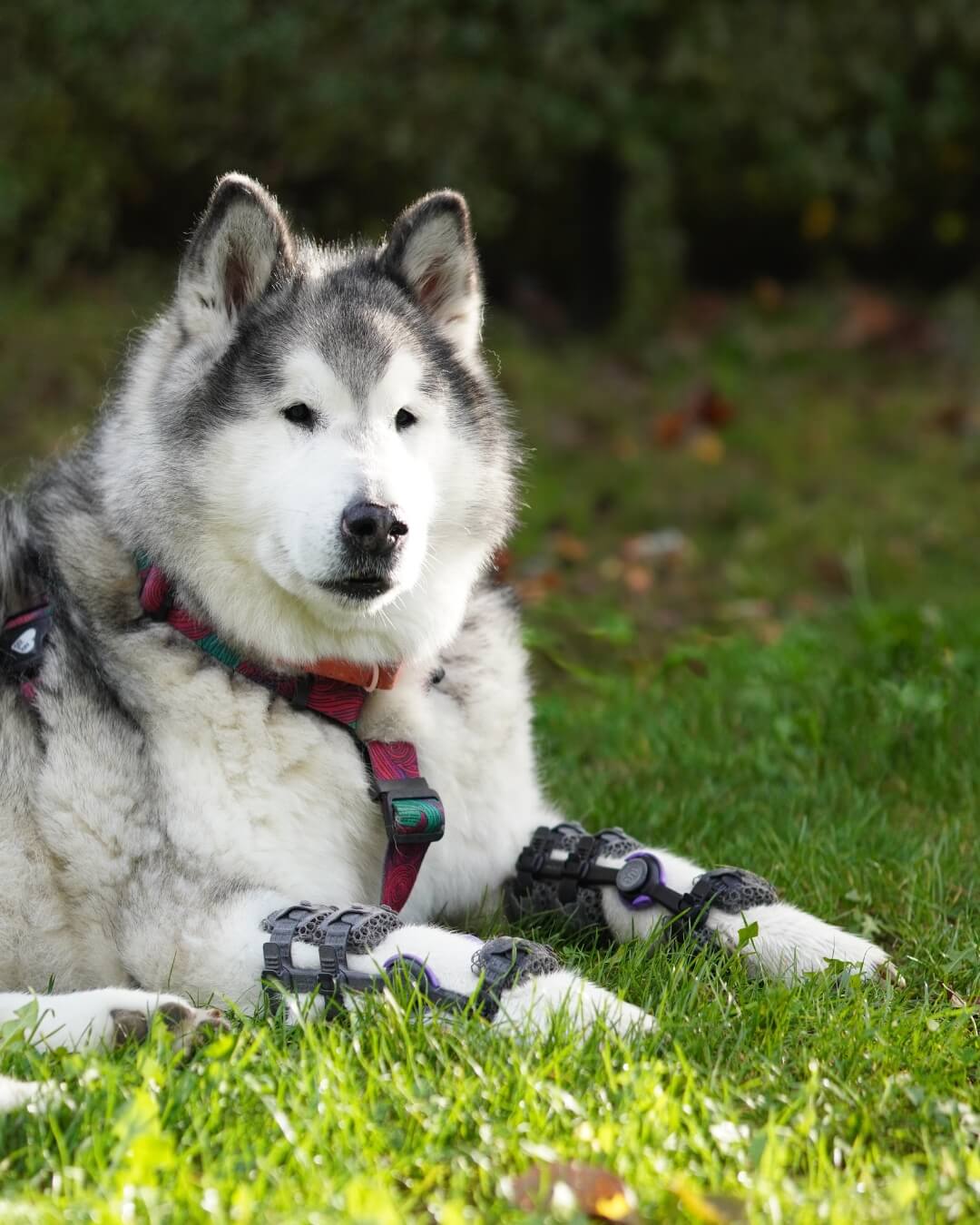
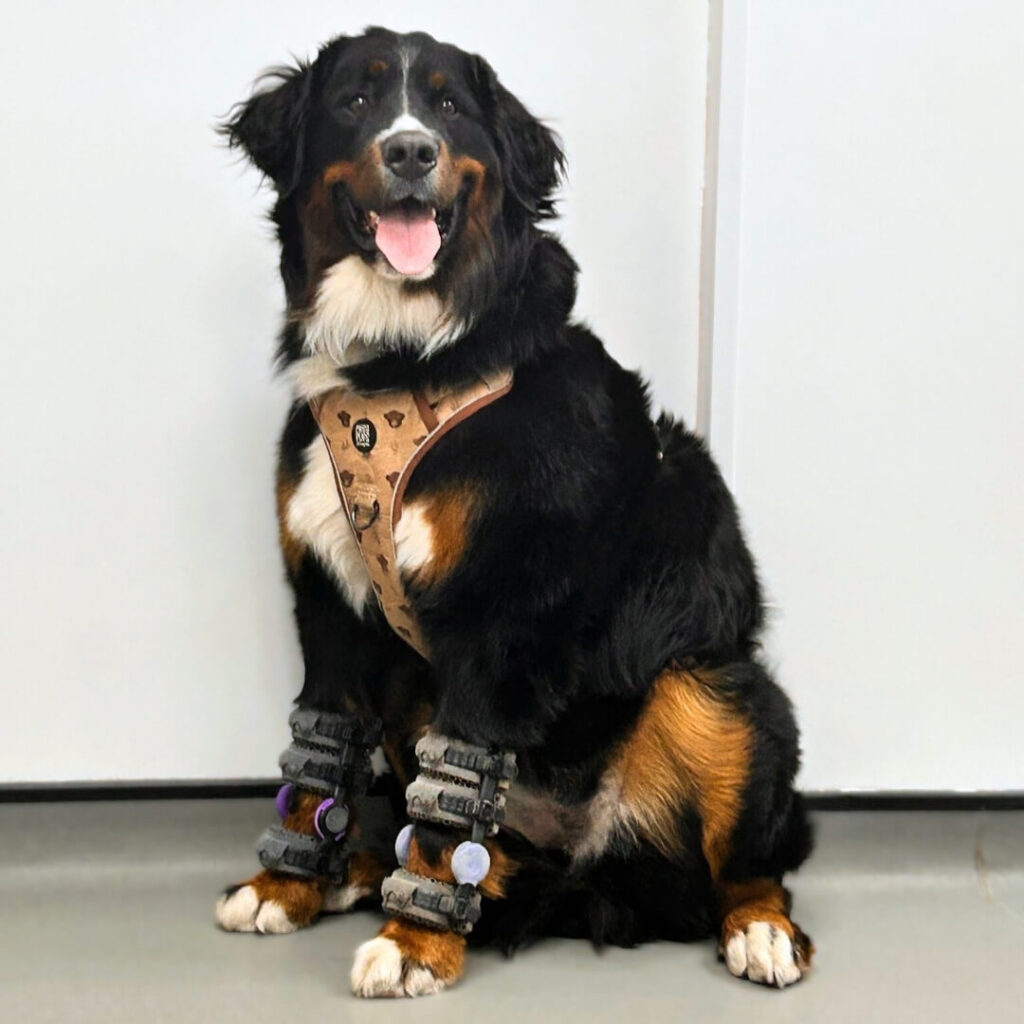
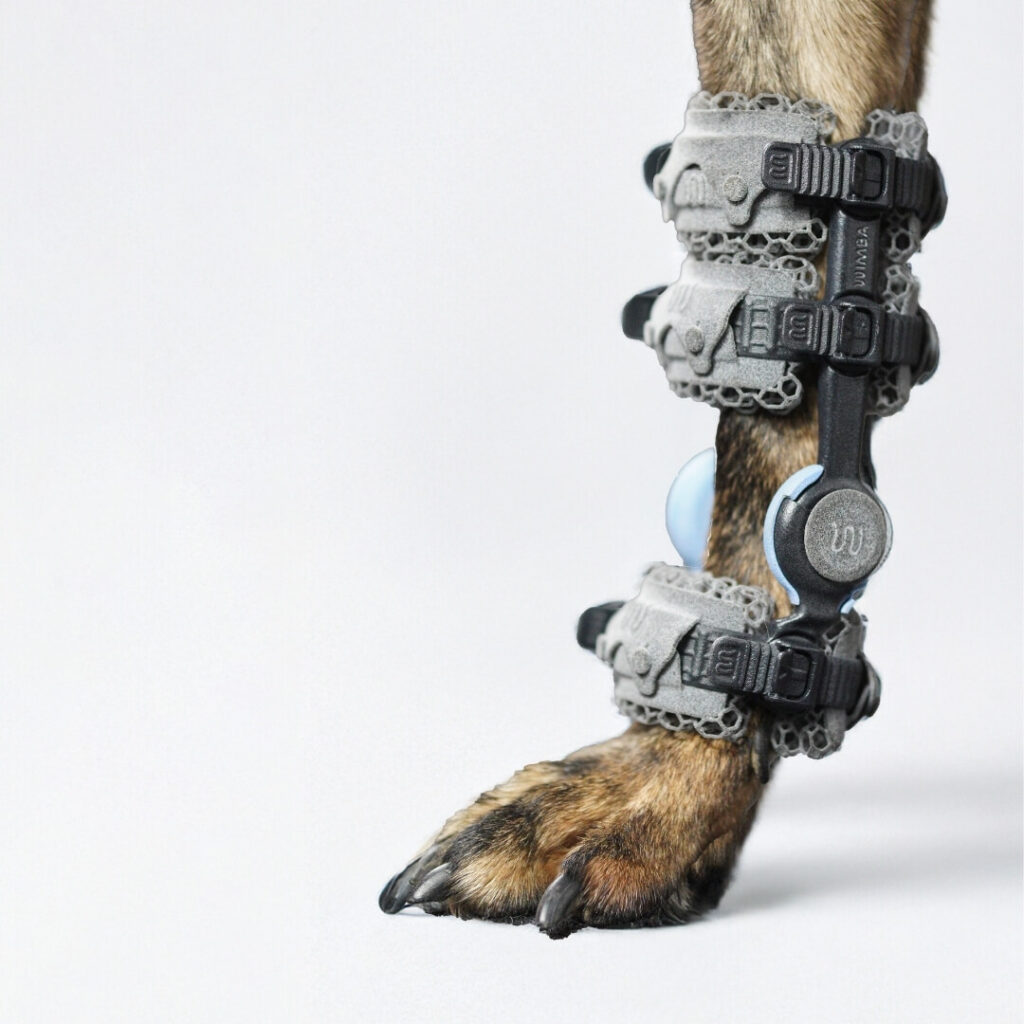
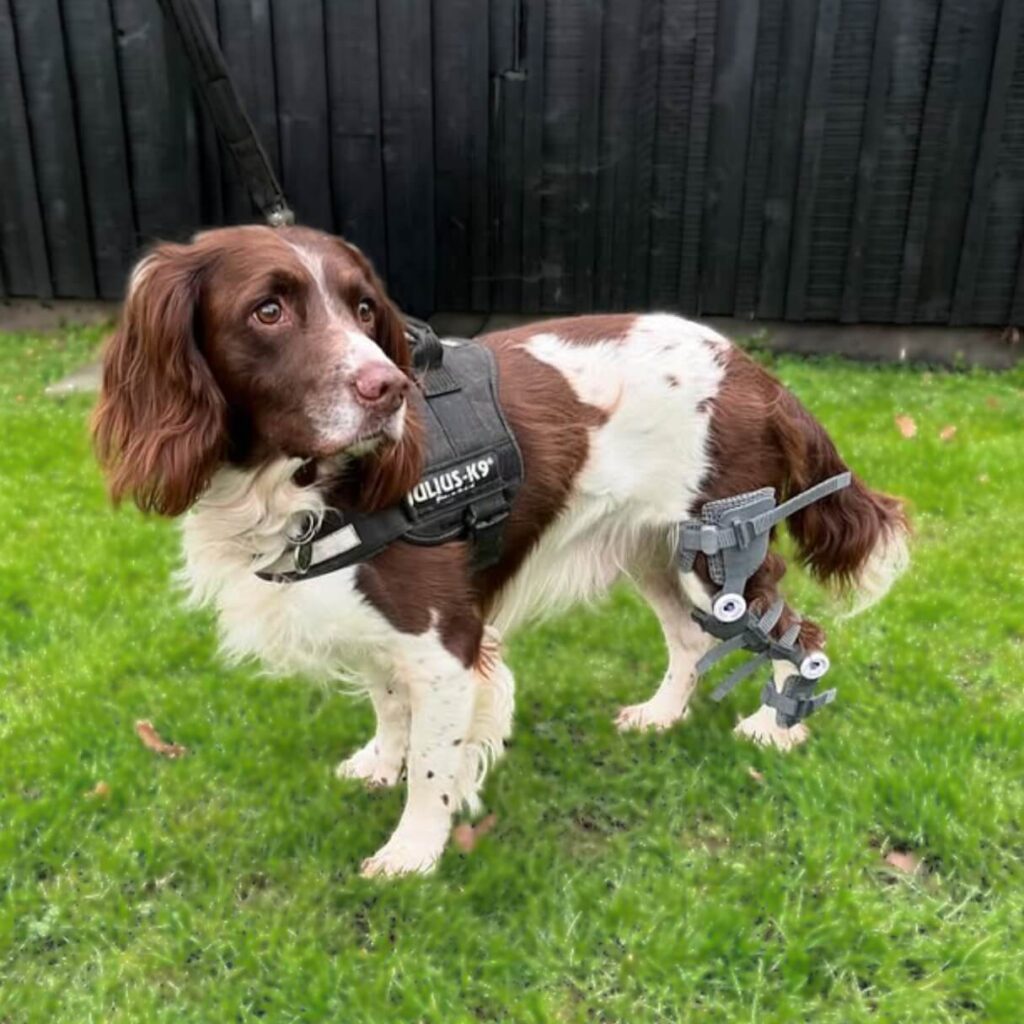
Is Your Dog Showing Signs of Osteoarthritis?
Osteoarthritis in dogs is very common orthopedic issue.
Upload a photo of your pet and your contact info —
we’ll see if your dog or cat may benefit from a custom-fit WIMBA brace.
Understanding Osteoarthritis in Dogs
Osteoarthritis (OA) and the chronic pain that comes with it affect an estimated 40% of dogs, yet it often goes unnoticed until a dog is clearly struggling. While many associate arthritis with older dogs slowing down, it’s more complex than that and far more common than most pet parents realize. Understanding what’s happening beneath the surface allows us to support dogs earlier, manage pain more effectively, and help them move with greater comfort for years to come.

Written by:
Dr. Emily Hall DVM, CCRT, CPAT-KA
What Is Osteoarthritis in Dogs and How Does It Affect Them?
Osteoarthritis is a degenerative joint disease. Over time, the smooth cartilage that cushions a dog’s joints begins to break down. This leads to inflammation, joint stiffness, bony changes, and most importantly pain. While many dogs are diagnosed between 8 and 10 years of age, OA can begin much earlier, particularly in dogs with congenital or developmental joint issues.
Veterinary literature highlights how OA disrupts the natural mechanics of the joint, alters load distribution, and sets off a cycle of pain, disuse, as well as further degeneration. These changes don’t just affect the joint. They affect the whole dog.

Noticed Subtle Signs of Discomfort?
Find Out If WIMBA Orthotics Are Right for Your Dog
Understanding Pain: More Than a Limp
Pain in dogs isn’t always obvious. In fact, many dogs adapt to discomfort in subtle ways long before they show a limp or vocalize. That’s where veterinary understanding of pain pathways becomes critical. Dogs with OA may experience:

Chronic pain,
which builds gradually over time
Acute-on-chronic pain,
where a flare-up worsens existing discomfort
Wind-up pain,
a phenomenon where the nervous system becomes sensitized due to ongoing pain, making even mild movement feel severe
The longer pain goes unrecognized, the more deeply it impacts your dog’s entire well-being. Recent work by Lascelles et al. (2019) shows that chronic pain doesn’t exist in isolation. It interacts with nearly every aspect of a dog’s life: gait and movement, sensory function, emotional state, social interactions, cognitive sharpness, and even sleep. This mirrors findings in human medicine, where reduced mobility, sensory changes, and emotional well-being (such as loneliness and frustration) are deeply interconnected in the experience of chronic disease.
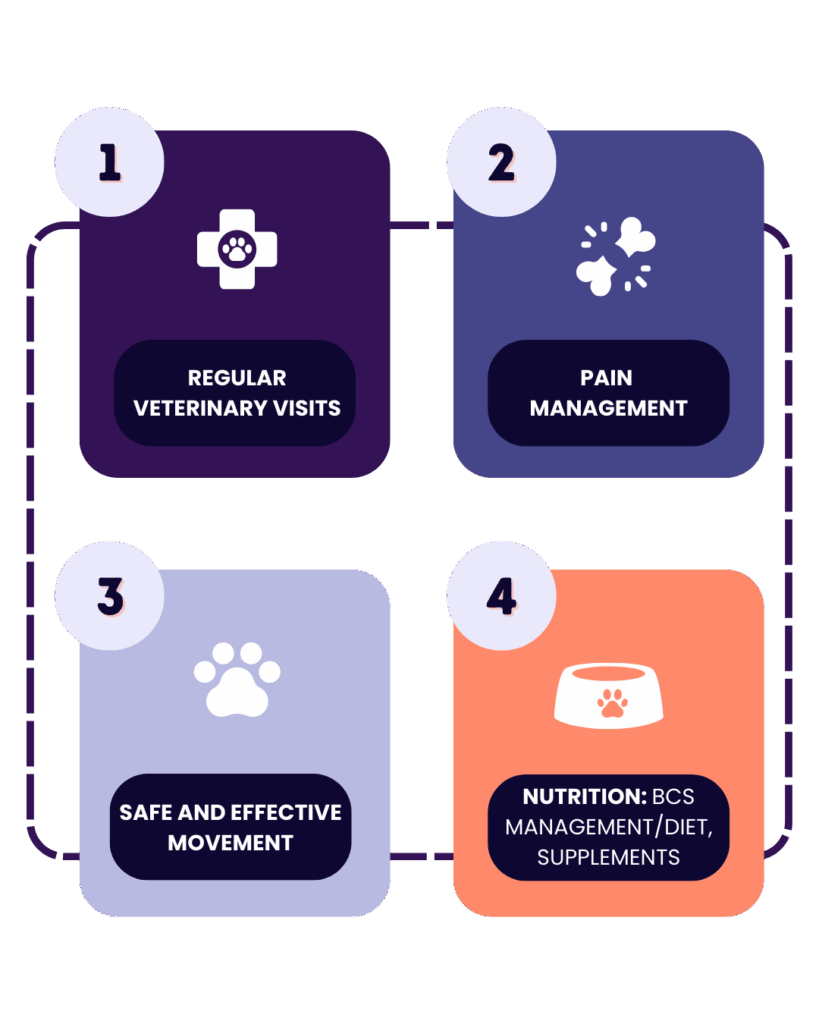

How Dogs Show Silent Pain
Recognizing the signs of canine arthritis starts with watching your dog closely and knowing what’s not normal. You might notice they hesitate to stand up, limp for a few steps before walking normally, or are just a little less eager to chase the ball. Some dogs begin pacing or showing restlessness at night. Others vocalize when they transition between floor types or start slipping more often on smooth surfaces. Sitting and lying down may look less smooth—they may flop or hesitate instead of moving fluidly.
These aren’t signs of aging. They’re signs of discomfort. And when caught early, they’re treatable.
FOR PET OWNERS
Help Your Dog Walk Comfortably Again
Concerned about your dog’s health and mobility? Could a Custom Orthosis Improve Your Dog’s Mobility? Fill in the form to findo out:
Diagnosing Osteoarthritis in Dogs
Diagnosis typically begins with a detailed physical exam and observation of movement. Your vet may perform range-of-motion assessments or orthopedic palpation to identify pain points or instability. Radiographs (X-rays) can reveal joint changes, though pain may still be present before visible damage appears.
In some cases, your veterinarian may suggest a pain trial—a short course of pain medication to see whether your dog’s movement or demeanor improves. If they do, it’s a strong indicator that pain was affecting their quality of life, even if it wasn’t obvious at first.
Veterinary rehabilitation therapists may also assess for compensatory movement patterns, muscle loss, or reduced joint function that aren’t always detected during routine visits.
Management of Osteoarthritis in Dogs: A Multimodal Approach That Works
Managing OA isn’t just about pain relief—it’s about giving your dog the tools to move comfortably and confidently for the long haul.
The standard foundation of treatment typically includes anti-inflammatory medications (such as NSAIDs), joint-supporting supplements like omega-3 fatty acids, and structured, low-impact exercise. But one of the biggest shifts in modern veterinary medicine is the understanding that OA care must be multimodal—treating not only the symptoms but also the cause, and preventing further deterioration.
While NSAIDs can be highly effective, they don’t have to be a lifelong commitment. A well-designed treatment plan that incorporates joint-friendly exercise, targeted canine rehabilitation therapy, and supportive tools can actually reduce a dog’s long-term reliance on medication. By maintaining a comfortable range of motion, we allow strengthening to occur—which in turn helps stabilize joints and reduce compensatory strain on other areas of the body.
The Role of Rehabilitation and Orthoses
Rehabilitation therapy is one of the most powerful ways to improve a dog’s quality of life with OA. It’s not just about walking more, it’s about helping them move better. Progressive, customized exercise routines restore strength and coordination, support mental well-being, and reduce pain through controlled movement.
In cases where joint mechanics are compromised, whether from chronic disease or developmental abnormalities, custom orthoses like the WIMBA Carpus or Tarsus Orthosis can provide valuable support. These devices stabilize the joint, improve alignment, and allow for safer movement. When used as part of a rehabilitation plan, they help dogs move more efficiently, reducing the energy cost of adapted gaits and preventing long-term harm.

Your pet’s comfort matters.
Explore Whether WIMBA Orthotics Can Support Your Dog’s OA Journey
What About Young Dogs?

One of the most important shifts in our understanding of OA is recognizing that it doesn’t just affect seniors. Dogs with congenital or developmental joint disease may begin experiencing OA related changes much earlier in life. These dogs often don’t present with the classic single limb lameness. They continue to play, walk, and appear “normal” to most people, but with subtle adaptations that mask discomfort.
These younger patients require a different kind of conversation. Pet parents aren’t always mentally prepared to hear that their young dog may have arthritis. But early intervention in these cases is especially powerful. With proper diagnosis and confidence in the treatment plan, these dogs can avoid years of progressive joint deterioration as well as live longer, more comfortable lives because of it.
Final Thoughts: A Diagnosis That Opens Doors
Osteoarthritis is not the end, it’s the beginning of a new way of supporting your dog’s life. Whether they’re a senior showing signs of slowing down or a younger dog managing early joint changes, the earlier we recognize OA, the more options we have.
With veterinary guidance, multimodal pain management, structured exercise, rehabilitation, and supportive devices like custom orthoses, your dog can continue to move, play, and enjoy their life—with comfort, strength, and confidence.
Movement is medicine. And your dog deserves the best kind.
Next Condition
PET STORIES
WIMBA Orthosis in Action:
WIMBA Orthosis in Action
Cruciate Ligament Rupture
Jack
Diagnosed with immune-mediated thrombocytopenia (ITP), an autoimmune disease, surgery was simply too risky for Jack. So when he ruptured his CCL, conservative management became the only option. With the support of his dedicated vet and rehabilitation team – and a custom WIMBA Stifle Brace – Jack has regained stability, confidence, and improved weight-bearing throughout his recovery.
“Since fitting Jack has increased his walks, he has improved weight bearing and in time will gain more hamstring muscle mass. We’ve got a journey to go yet but safe to say Jack is ending the year on a positive note.”
Vault Physiotherapy
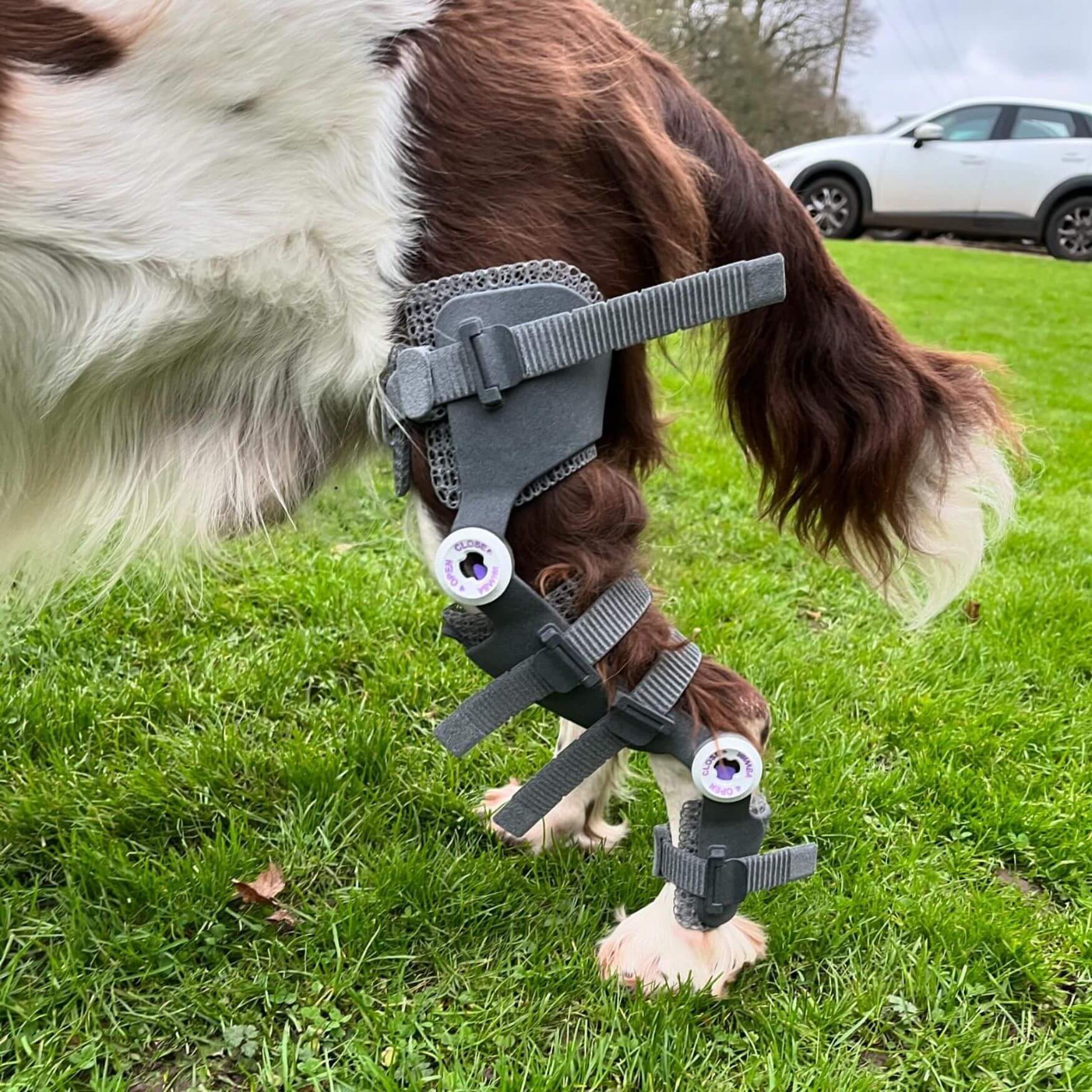
Carpal Joint Hyperextension
Oslo
Meet Oslo, a five-year-old Australian Shepherd who loves exploring the summits of the Haute-Savoie and the Alps. Following surgery, he now experiences carpal hyperextension, which impacts his mobility and overall quality of life. The introduction of the WIMBA orthosis marked a significant turning point in Oslo’s recovery.
“I found out about WIMBA, a company that manufactures custom-fit braces in collaboration with vets, for which lightness and mobility are its main assets. Easy to put on, it has really changed Oslo’s life! I’ve rediscovered my dog, through lots of mountain activities and outdoor sports!”
Flo Vani
Owner of Oslo

Cranial Cruciate Ligament Rupture
Simba
Simba, a 31 kg dog, was diagnosed with cranial cruciate ligament rupture. With the support of the WIMBA Stifle Brace, Simba’s mobility is improving. See how the WIMBA Stifle Brace adds stability to Simba’s stifle joint.
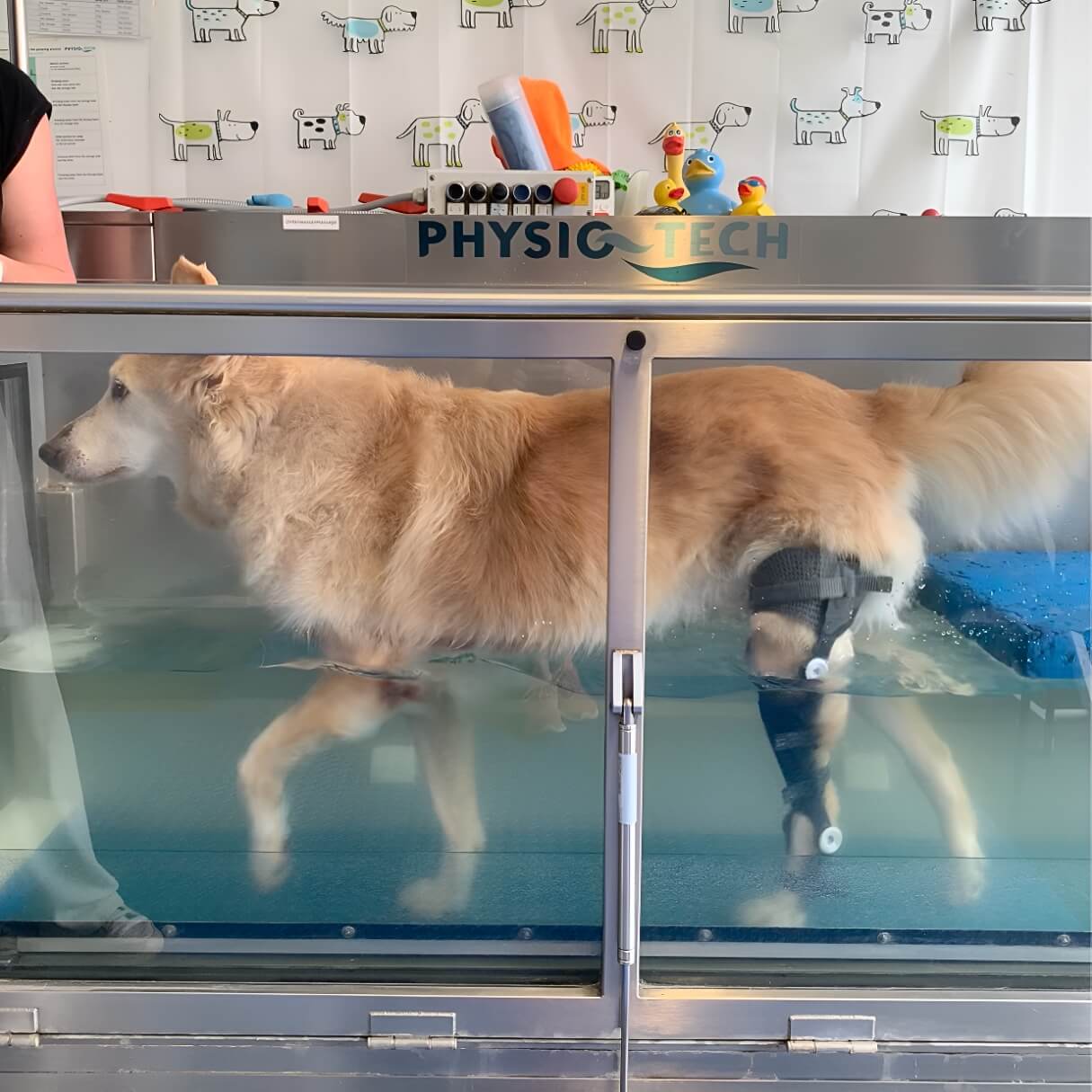
Compensatory Carpal Hyperextension Injury
Barry
After suffering a severe carpal hyperextension injury in October 2024, Barry has gone through a lot. Today, in the first part of Barry’s story, we’re sharing a huge milestone – his first steps in his WIMBA Carpus Go brace! This is just the beginning, but seeing him regain mobility and confidence makes every challenge worth it.


Follow WIMBA on Social Media
Follow WIMBA for more pet mobility tips & success stories!
This blog post is for informational purposes only and should not replace professional veterinary advice. Always consult your veterinarian for an accurate diagnosis and tailored treatment plans for your pet.